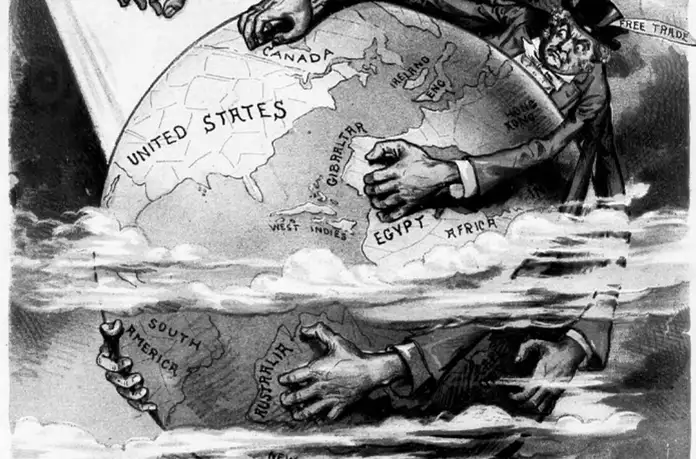- US trade policy is in the spotlight this week, with a slew of tariffs planned to come into effect on April 2nd. Investor sentiment has been fragile and markets volatile.
- The way we see things, global risks remain skewed to the downside for the Kiwi economy. And therefore, we see potential downside risk to interest rates and currency too.
- Our Chart of the Week takes a look at the latest monthly jobs data from Stats NZ. After some hefty declines over 2024, the pace of job losses continues to flatten out. We're slowly crawling out of recession, but it'll take time and more sustained demand before we see firms hiring again.
Data continues to confirm that the Kiwi economy's turnaround is unfolding as anticipated. The economy is past it’s low and set to gradually recover in the second half of this year. From PMIs popping into positive territory to healthy export earnings for the rural sector, greenshoots are emerging. The lift in activity however is limited to pockets of the economy, notably tourism and agriculture. And the pace is certainly not suggestive of a surge in activity. Essentially, conditions remain just right for the RBNZ to deliver two further 25bps cuts as signalled at their February meeting. And in our view, a third 25bp rate cut in the September quarter is need, ultimately to return the cash rate to neutral settings (~3%). The interim RBNZ Governor should be announced shortly, and shouldn’t change the outlook. Data to date pledge a strong case for further easing.
It’s becoming clear that there’s little in the way of domestic catalysts that could derail the Kiwi economy from this trajectory. But when thinking of the balance of risks, we still see risks as skewed to the downside for the economy. Risks, which are predominately coming from offshore.
We're increasingly concerned about the global backdrop. Between escalating geopolitical tensions and growing risk of geoeconomic fragmentation, the global outlook is shrouded in uncertainty. That’s not great for the Kiwi ‘small, open’ economy. While we’ve managed to stay off the Trump tariff country hit list (for now), the ramifications of an escalated trade war could hurt us significantly. Fears of a global growth slowdown are building given the level and scope of the tariffs proposed. And in that environment, demand for Kiwi exports will come under pressure. It certainly doesn’t help that our two key trading partners are at the forefront of the trade war. Such a scenario could stall the Kiwi economy’s expected recovery, requiring the RBNZ to push the cash rate below 3%. It is a scenario that’s certainly not outside the realms of possibility, yet one the market has not priced.
In our latest FX tactical “Wobbly confidence: We hit 55c on tariff turmoil. Now, where will the Kiwi go?” we discuss these risks further and the impact on rates and curreny. Our central scenario sees the Kiwi dollar remaining largely rangebound. Holding here at current levels before an eventual climb to 60c by the end of the year. But there’s certainly scope for the Kiwi to test its recent lows should we stray from our central scenario.
In any case, we’ll hear more on the tariff front this week. While unfortunately not part of the April fools’ festivities, April 2nd will be, according to Trump, “Liberation Day” for the US. We’re set to hear about Trump’s plan for reciprocal tariffs, along with an update on the on-again, off-again 25% tariffs on Mexico and Canada. Additionally, we’ll also see whether the newly announced 25% tariffs on autos, as well as the 25% tariffs on goods from any country that imports Venezuelan oil and gas will come into effect as promised last week. Markets already down on the news and expectations of what’s to come, are likely in for another burst of volatility. We’re watching this space very closely.
Financial Markets
The comments below were provided by Kiwibank traders. Trader comments may not reflect the view of the research team.
In rates, the holding pattern continues
“NZ rates very much in a holding pattern awaiting direction. Sub 2-year rates largely anchored by OCR expectations for two -25bp cuts and half a chance of another. Terminal OCR expectations remain at around 3.10%. Mortgage flow in the 2 year again evident throughout last week, lifting yields off recent lows (3.38%) to close above the 3.40% level again. This flow is resulting in a +25bp hike being priced into H2 2026. The direction past 2 years remains at the mercy of offshore moves. US Treasury yields bouncing along the top of recent ranges until late in the when markets sided folded under the weight of weakening confidence and growth outlook.
RBA meet tomorrow, a tiny chance of a cut is priced (-3bp). Most expecting a neutral outlook given the uncertainty, although last week’s employment and CPI misses will have them on alert. Back in NZ, confidence numbers are clearly struggling. The RBNZ place some emphasis on these high frequency releases which should all but cement near term cuts. Tarriff implications are a huge uncertainty, one global central banks have remained cautious on given inflation implications which is seeing chances of cuts wane a little (vs markets siding with weaker growth). For NZ the tariff outlook remains even more uncertain, let’s see what April 2nd brings.
This week the syndication of the NZGB2032 should be announced, which may have some impact on longer end yields if buyers choose to hedge.” Ross Weston, Head of Balance Sheet – Treasury
In currencies, markets on watch for tariffs on April 2
“This week a lot of focus will be given to events on April 2, which is when we are meant to see the delivery of the much talked about tariffs. Whether or not there are last minute revisions or Trump pushes the can down the road for further negotiation remains to be seen. Last week market participants had a more upbeat start to the week, briefly putting down concerns about global economic growth. But the tone soured soon enough, with Trump announcing a 25% tariff on automobiles. Otherwise there was noise around geopolitics, including Trump suggesting that he would not rule out a military option for annexing Greenland (you can’t make this stuff up). Concerns around market volatility were also brushed off by Trump. Meanwhile consumer confidence in the US continues to slip. We have similar problems with consumer sentiment ourselves in NZ. Last week the Kiwi traded in a fairly moderate range, with little in the way of big-ticket economic data releases to provide direction. NZDUSD traded between 0.5713-0.5760. We are strongly anchored to the 0.5700 level for now, with some upside potential into 0.5750-0.5800+. But uncertainty will keep a lid on major upside moves for now. NZDAUD traded close to 0.9100 last week, between 0.9082-0.9112. Tomorrow we hear from the RBA with a rate decision, but they are very much expected to keep their cash rate unchanged, and their rhetoric hawkish as they continue to be eagle eyed on inflation. We don’t anticipate that the NZDAUD cross will stray far from the 0.9100 level this week.” Mieneke Perniskie, Trader - Financial Markets.
Weekly Calendar
- Across the ditch, the RBA will announce their latest policy decision. Following February's 25bps cut to 4.10%, the RBA is widely expected to keep rates unchanged. The RBA presented a hawkish rhetoric at the last meeting, with no signal for back-to-back rate cuts. The data since then has also printed largely as expected, with underlying inflation continuing to moderate.
- US payrolls for March is the main data release this week. Jobs growth is expected to slowdown, with an expected 138k increase in jobs over the month - down from February's 151k gain. Despite the slowdown, jobs growth has averaged around 160k over the past year, which is consistent with a stable unemployment rate. The unemployment rate is expected to hold at 4.1%.
- Euro-area flash CPI is expected to show headline inflation holding at 2.3%, and core slowing slightly to 2.5%. The datapoint is a key release ahead of the ECB's April policy decision. Interest rates are approaching neutral, which means the case for a pause and assess move is increasingly likely. However, either a significant upside or downside to the inflation print could tip the balance either way.
- China PMI data is due out this week, and expected to show that the recovery in manufacturing and services continues, albeit slowly. Both the official manufacturing PMI and non-manufacturing PMI indexes are expected to remain marginally above 50. The data may, however, show a lift in construction off stronger government support. The impact of stimulus announced in early April is yet to trigger a meaningful boost to activity.
See our Weekly Calendar for more data releases and economic events this week.
All content is general commentary, research and information only and isn’t financial or investment advice. This information doesn’t take into account your objectives, financial situation or needs, and its contents shouldn’t be relied on or used as a basis for entering into any products described in it. The views expressed are those of the authors and are based on information reasonably believed but not warranted to be or remain correct. Any views or information, while given in good faith, aren’t necessarily the views of Kiwibank Limited and are given with an express disclaimer of responsibility. Except where contrary to law, Kiwibank and its related entities aren’t liable for the information and no right of action shall arise or can be taken against any of the authors, Kiwibank Limited or its employees either directly or indirectly as a result of any views expressed from this information.




